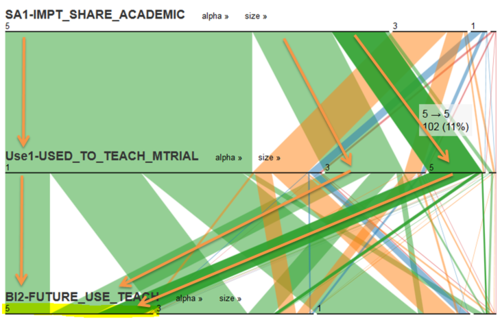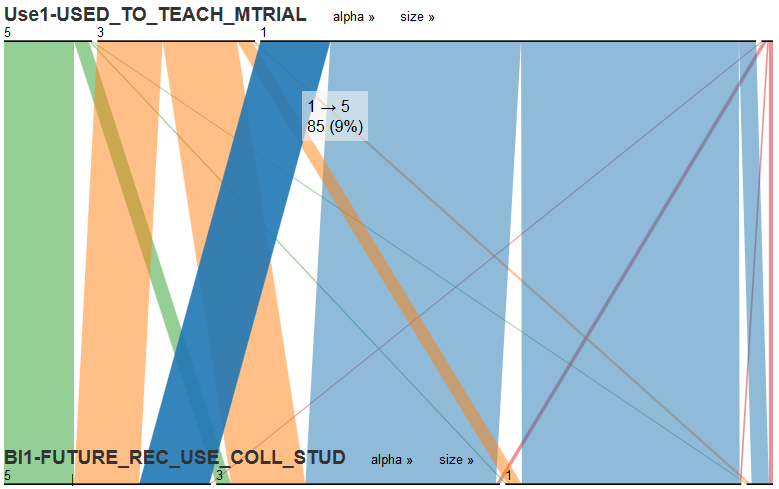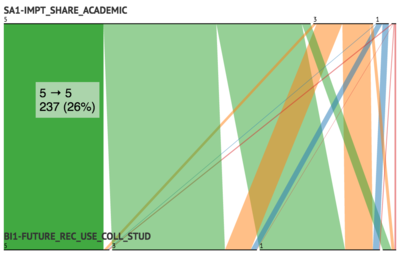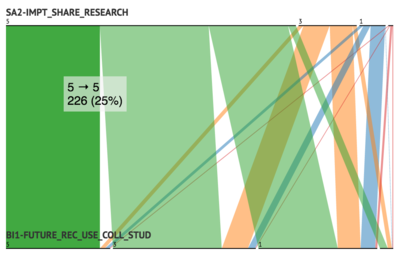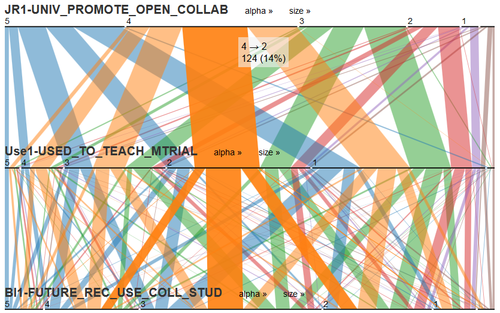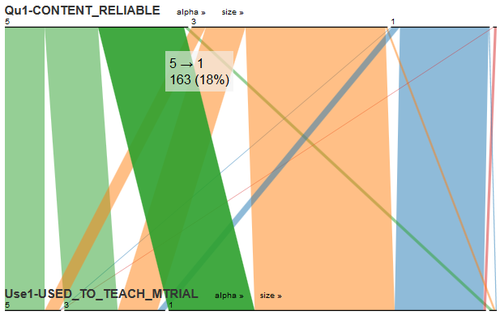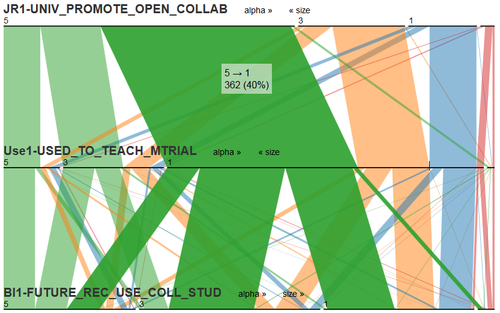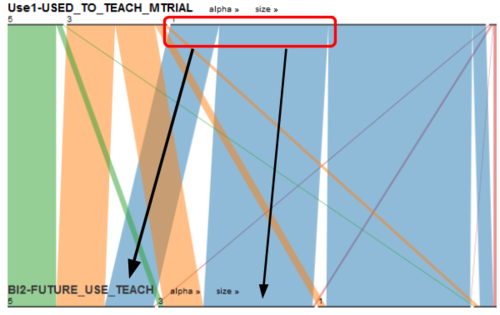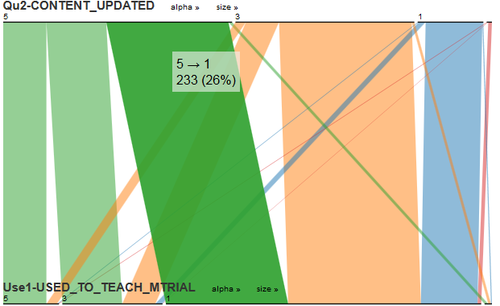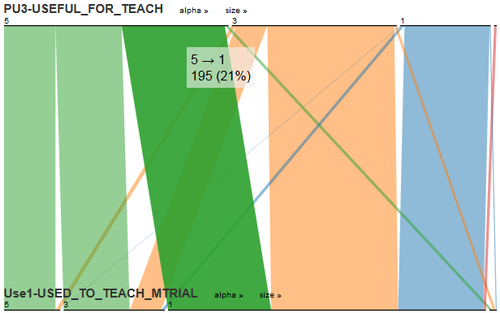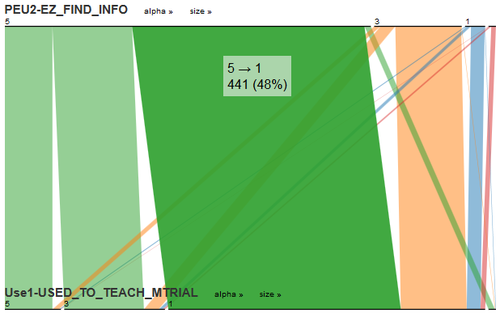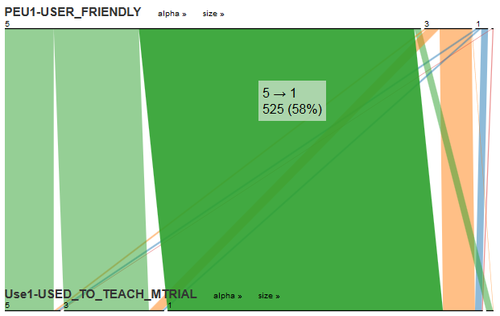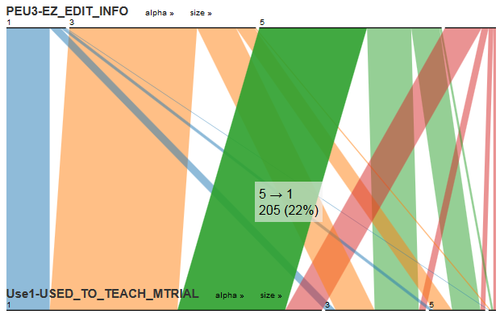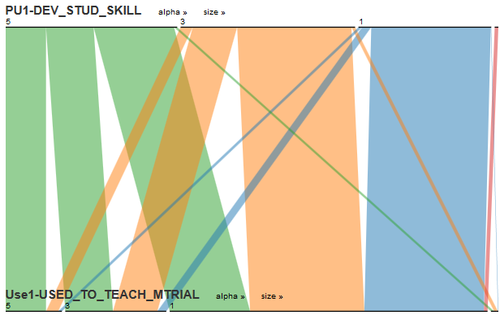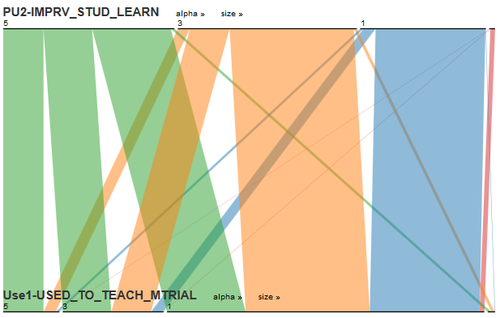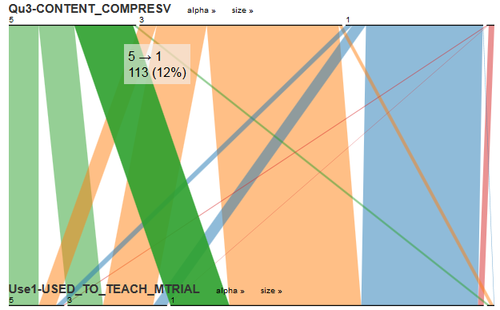ISSS608 2016-17 T1 Assign2 Nguyen Tien Duong Result
Contents
Analyzing Process
- Define journey from Background to Behavior
- Approach: Start from Behavior, analyze the closest impact that is driven factor. Drill in further detail.
Defining clusters
From total 800+ observations, based on behavioral intention, we split wiki users into 3 groups:
- OUTSIDER: group of people who do have none or very low intention to promote Wiki usage in academic environment.
- ADOPTER: group of people who do not either strongly support or against the usage of Wiki in academic environment
- ADVOCATOR: group of people who strongly indicate that they are willing to promote Wiki in the future for academic usage.
Advocator insight
- Behavior: Are they currently using Wiki for teaching?
The observation has shown that Advocators are not necessarily to be current users. Almost equal contributions are from all 3 sources: Current from intensive academic users – ranking 5, medium – ranking 3 to non-using – rank 1.
Flip the view from other side, it is obvious that mainly all 5-rank “used to build teaching materials” users will be strongly supportive to advocate the academic usage of wiki.
- Belief: How do advocators think about collaborative research and sharing knowledge?
This relationship is truly obvious showing that majority of advocators (BI1 = 5-4) are from faculties who believe in importance of sharing knowledge in academic environment. The 2 charts below showing the very similar pattern between sharing academic and research activity via wiki.
The result has concluded that behavior intention to usage of Wiki is defined by the belief that faculties have toward sharing and opening knowledge.
High level insight
An observation at high level has been drawn out: Institution policy has a fundamental effect on usage of wiki while faculty members are skeptical.
The below graph present relationship from environmental factor (JR1: University promoting open collaboration), to actual behavior (Use1: Used to create teaching materials) and finally lead to Behavior Intention (BI1: Future will recommend colleagues and students to use). A note before further analysis: JR1 is a question to faculty if his/her institution is well promoting open collaborate. Therefore, the answer reflected the perception of that faculty.
Observing the opposite distribution of JR1 and Use1, the result showed that academic faculties are skeptical. Most of them acknowledge that the university promotes open collaboration (61% scored them high JR1), but major of faculties drop off when asking if they use Wiki for developing teaching materials (Use1).
However, looking at BI1 (Future recommend colleagues and students to use wiki), the Advocators (rank 5) are made up of majorly faculties whose university promoting open collaboration. The “flow” can be split by current usage of wiki Use1 (into 3 green bold lines) crossing all range (highly use, middle and reluctance), but end up with joining together and contribute major part to define Behavior intention (BI1).
Now, break down the feedback into higher resolution by selecting data source option to change to “Separated (1-5) to observe more granuity level of data.
This break down analysis gives us the current situation information. Since in the high level observation, we concluded that faculties are skeptical, we can address how skeptical they are in this breakdown level. Let’s look at the boldest line, we have the highest population part of faculties are confident that University is promoting open collaboration (rank 4/5). On the other hand, they are not actively using Wiki for teaching materials (2/5) and having unsure future decision (3/5).
Then, are they willing to move on in the future? By plotting Current usage (Use1: Used for making teaching materials) versus Future usage (BI2: In future will use for making teaching materials), we discover the insight. The result reveals that faculties are moving toward using Wiki as a tool to develop teaching materials. There absolutely bolder flow from non current wiki-using to future active using (rank 5) or adopt to use in the future (rank 3).
What are the holdback factors ?
We have seen the existing gap between environment factor and behavior (and future behai. There must be a lagging factors that hold faculties back from adopting wiki for academic usage. We now will drill in more detail to analyze what faculty perceived the usefulness of wiki and if they have a doubt about wiki knowledge being used for academic purpose. In this analysis, we focus on :
- Functionality factor (System Usability)
- Content factor (Information Quality)
- Functionality:
- The system is easy to use.
- Easy to find information
- From Medium to very easy to edit information if required.
- Usefulness value
Almost 1/2 perceived the usefulness in all aspects (developing student skills, improving student learning experience and useful for teaching) but refuse to adopt wiki actively. Since the usefulness is perceived, the only strong factor that can be a hold-back is the content factors. That could be driven force since academic required high comprehensiveness and credible information for their study and research.
- Content
This factor is interesting. While all previous analysis shows the gap, this factor is explaining for that. Look at Qu4 and Qu5, they are showing the issues related to credibility of information. Almost faculties who think that Content Quality sourced from wiki is lower than any other academic sources (Qu4), will end up with not using Wiki. (do note that the ranking is based on negative feedback, so rank 5 is the top rank negative). Additionally, Qu5 received similar result. Faculty members are having concern over the truthfulness of Wiki information. Most of rank 1 will flow to “not using wiki”.
Internal factors analysis
In the previous parts, we have considered external factors which influence faculty. This second part, we will look into personality, internal factors that may contribute to the behavior and intention.
Analyze the personal view about importance of sharing academic, we found out that regardless with current wiki usage status (Use1), the future population who (BI2=2) will be using Wiki for teaching are all coming from the same trait toward valuing the importance of share academic.
